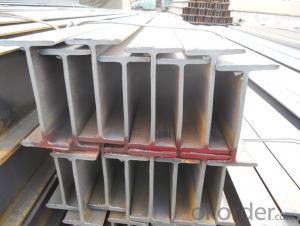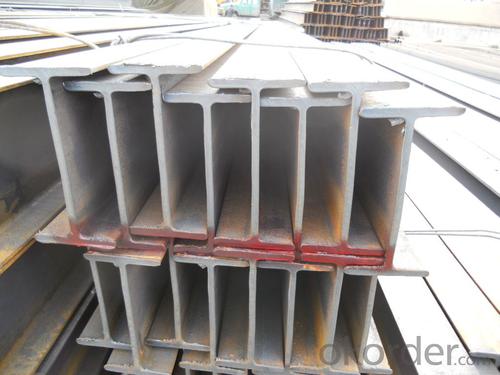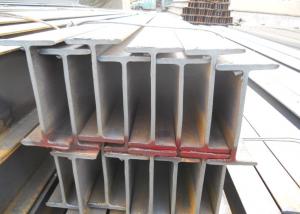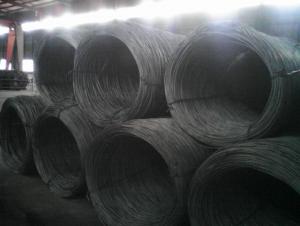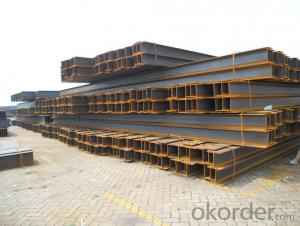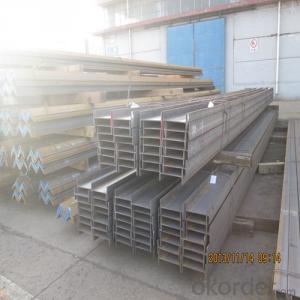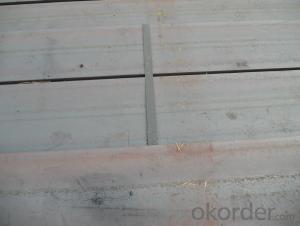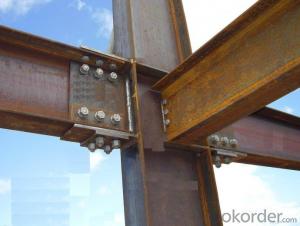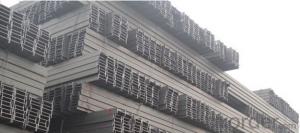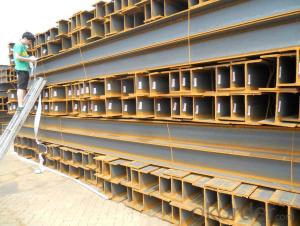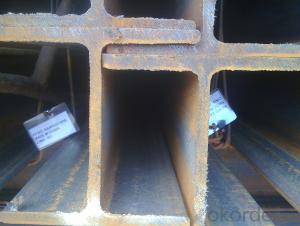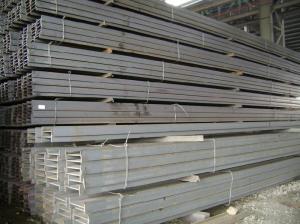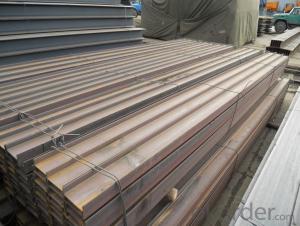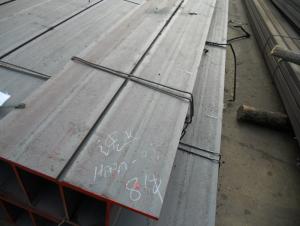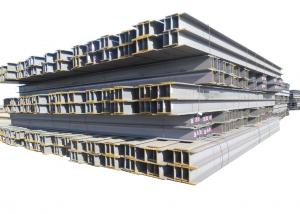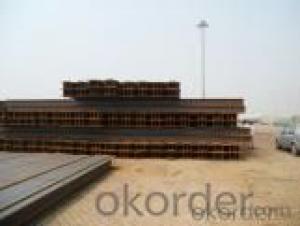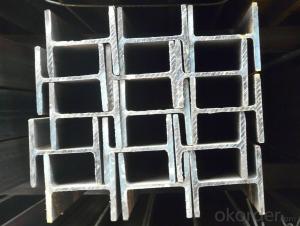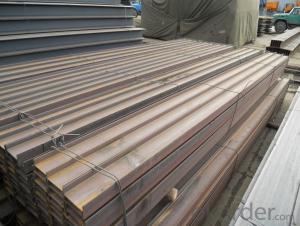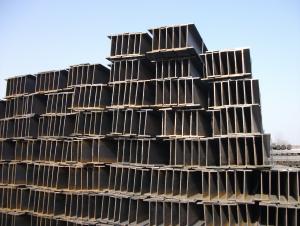Structural carbon steel h beam profile H iron beam (IPE,UPE,HEA,HEB)
- Loading Port:
- Tianjin
- Payment Terms:
- TT OR LC
- Min Order Qty:
- 30 m.t.
- Supply Capability:
- 28000 m.t./month
OKorder Service Pledge
OKorder Financial Service
You Might Also Like
Hot rolled H beam section
Product Description
1. Standard: GB, JIS, ASTM ST
2. Material: Q235, Q345, SS400, S235JR, S275JR, S355JR
3. Length: 5.8-12m or according to our clients' requirements
4. Origin: Tangshan, China
5. Package: load on 20 feet/40 feet container or by bulk according to the quantity and our client's requirement
6. Delivery time: within 20 days after receiving deposit or original L/C
7. Certificate: ISO, SGS, BV, CIQ or other test
8. Technic: Hot rolled
9: Surface: painted, galvanized or punch holes
10. Main market: East-south Asia, Mid-east, South American
11. Usage: Construction structure and Frame use
12. Other Main products: Angle steel, I beam and Channel steel
Specification:
H Type Steel Size and Theoretical Weight | |||||
Size (mm) | Theoretical Weight (kg/m) | Size (mm) | Theoretical Weight (kg/m) | Size (mm) | Theoretical Weight (kg/m) |
100*50*5*7 | 9.3 | 250*125*6*9 | 29 | 446*199*8*12 | 65.1 |
100*100*6*8 | 16.9 | 250*250*9*14 | 71.8 | 450*200*9*14 | 74.9 |
125*60*6*8 | 13.1 | 294*200*8*12 | 55.8 | 482*300*11*15 | 110.8 |
125*125*6.5*9 | 23.6 | 298*149*5.5*8 | 32 | 488*300*11*18 | 124.9 |
148*100*6*9 | 31.1 | 340*250*9*14 | 36.7 | 496*199*9*14 | 77.9 |
150*75*5*7 | 14 | 300*150*6.5*9 | 93 | 500*200*10*16 | 88.1 |
150*150*7*10 | 20.7 | 300*300*10*15 | 78.1 | 582*300*12*17 | 132.8 |
175*90*5*8 | 18 | 346*174*6*9 | 41.2 | 588*300*12*20 | 147 |
175*175*7.5*11 | 40.4 | 350*175*7*11 | 49.4 | 596*199*10*15 | 92.4 |
194*150*6*9 | 29.9 | 350*350*12*19 | 134.9 | 600*200*11*17 | 103.4 |
198*99*4.5*7 | 17.8 | 390*300*10*16 | 104.6 | 700*300*13*24 | 181.8 |
200*100*5.5*8 | 20.9 | 396*199*7*11 | 56.1 | 800*300*14*26 | 206.8 |
200*200*8*12 | 49.9 | 400*200*8*13 | 65.4 | 900*300*16*28 | 240.1 |
244*175*7*11 | 43.6 | 400*400*13*21 | 171.7 | ||
248*124*5*8 | 25.1 | 440*300*11*18 | 120.8 | ||
Length=6-12meters | |||||
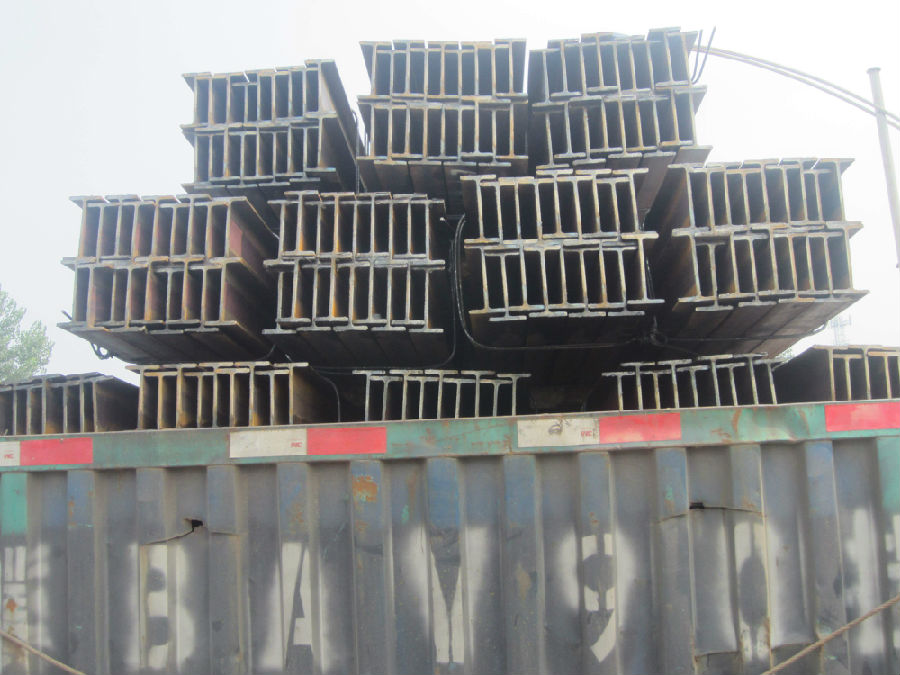
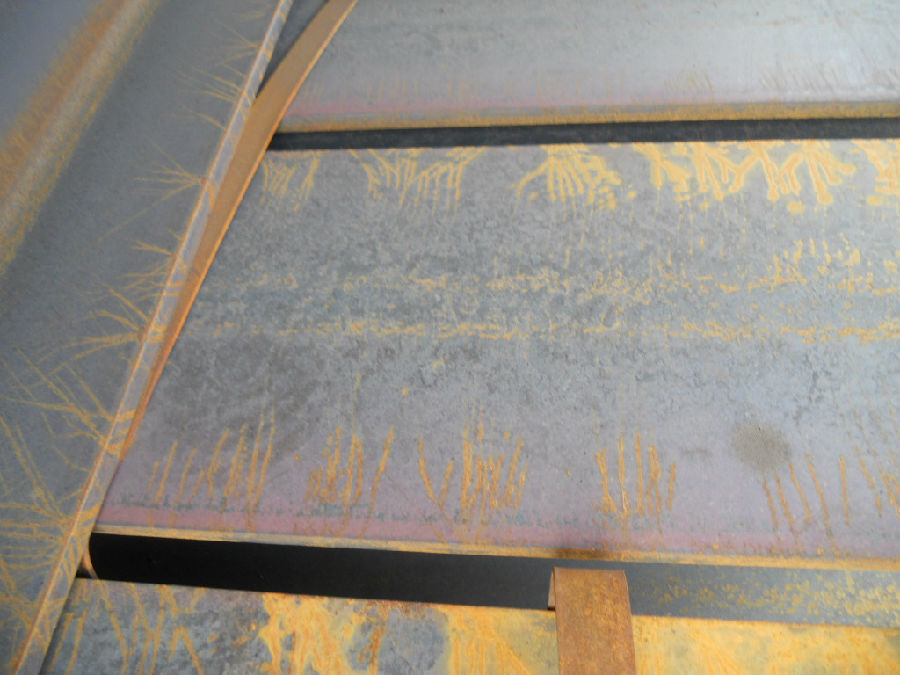
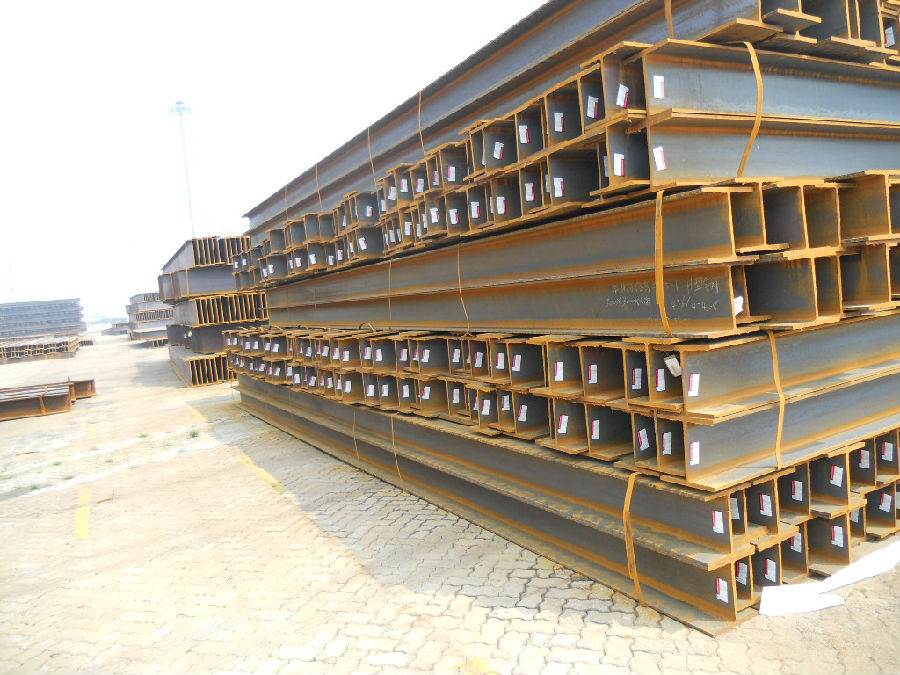
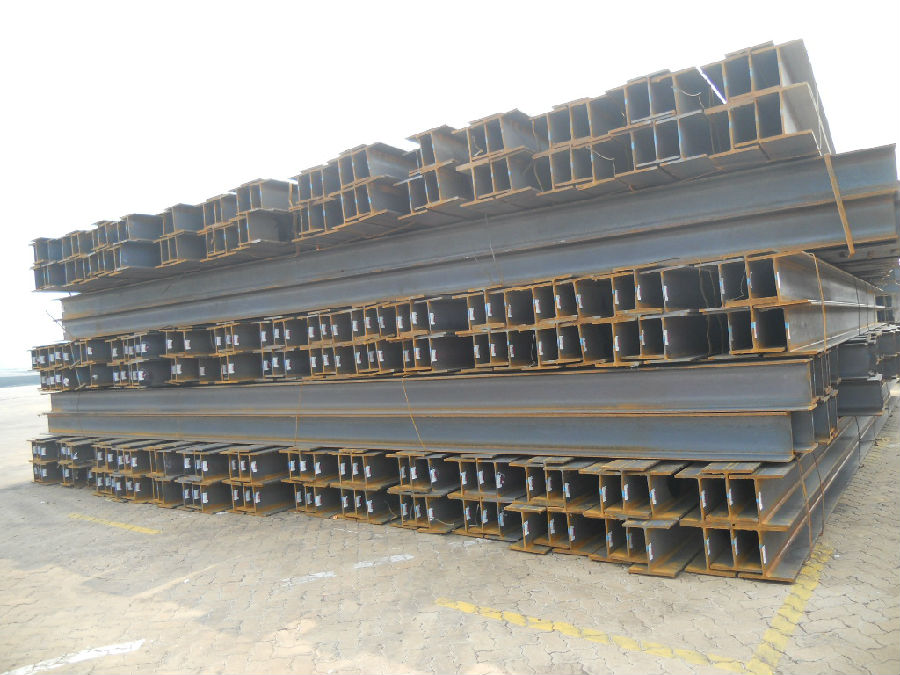
- Q: What are the common fabrication techniques used for steel H-beams?
- There are several common fabrication techniques used for steel H-beams, including hot rolling, welding, and cutting. Hot rolling is the primary fabrication technique used to produce steel H-beams. It involves heating a large steel billet and passing it through a series of rollers to shape it into the desired H-beam profile. This process allows for the creation of H-beams with consistent dimensions and excellent structural integrity. Welding is another important technique used in the fabrication of steel H-beams. It involves joining multiple steel plates or sections together to create the H-beam shape. Welding can be performed using various techniques such as arc welding, MIG welding, or TIG welding, depending on the specific requirements of the project. Welding helps to increase the strength and rigidity of the H-beam by creating a continuous and seamless connection between the different components. Cutting is also a common fabrication technique used for steel H-beams. It involves the removal of excess material to achieve the desired dimensions and shape. Cutting can be done using various methods such as sawing, shearing, or plasma cutting. This process allows for precise and accurate shaping of the H-beam, ensuring it meets the required specifications. Overall, these fabrication techniques play a crucial role in the production of steel H-beams, ensuring their structural integrity, dimensional accuracy, and quality.
- Q: Can Steel H-Beams be used in residential housing or apartment buildings?
- Yes, Steel H-Beams can be used in residential housing or apartment buildings. They are commonly used in construction due to their strength, durability, and ability to support heavy loads. They provide structural integrity and can be used to create open floor plans and large spans, making them suitable for various types of residential buildings.
- Q: Can steel H-beams be used in the construction of commercial buildings?
- Indeed, the utilization of steel H-beams is feasible for the erection of commercial buildings. In the realm of construction, steel H-beams are widely employed owing to their remarkable strength-to-weight ratio, endurance, and adaptability. These beams serve as a crucial foundation, ensuring the stability and structural integrity of buildings, rendering them appropriate for commercial purposes. Moreover, steel H-beams are accessible in various dimensions and can be custom-made to fulfill precise building requisites. This flexibility enables the efficient and economical construction of commercial buildings, hence establishing steel H-beams as a sought-after preference within the industry.
- Q: In steel structures, what is the meaning of the "" between the two members of the H steel brace 2L 180*12,10?
- Mainly divided into equilateral angle steel and equilateral angle steel two categories, the unequal angle can be divided into equilateral equilateral thick and unequal thickness two. Angle expressed side and edge thickness size. The current domestic steel specifications for 2 - 20 cm, to length number is the same number. Horn steel often have 2 - 7 different edge thickness. The actual size and the import side angle marked on both sides of the thickness and indicate the relevant standards. The general side of 12.5cm over the large angle, 12.5cm - 5cm for the medium angle, length below 5cm for small angle. The order of a steel export angle to use specification for steel, the carbon steel grades. The corresponding angle in addition to standard number, no specific composition and performance series. Puri steelThe fixed angle delivery length ruler, size two, domestic angle length range is 3 - 9m, 4 - 12M, 4 - 19m, 6 - four 19m range according to the different specifications. The Japanese steel section length range is 6 - 15m. unequal angle height according to length the edge of the equilateral angle steel wide to calculate.
- Q: Can steel H-beams be used in exhibition booth construction?
- Yes, steel H-beams can be used in exhibition booth construction. They provide excellent structural support and can be used to create sturdy and durable booth structures.
- Q: 300*200h steel 7 meter span center load the most, can bearing 30 tons?
- H is the calculation of the height normal stress of the maximum width section of I-beam: Ysigma=M/W, M=, maximum bending moment = load, travel distance, W= bending modulus, maximum allowable stress of Ysigma=, and maximum value of load
- Q: Are steel H-beams suitable for supporting gantry cranes?
- Yes, steel H-beams are highly suitable for supporting gantry cranes. They are capable of providing the necessary strength, stability, and load-bearing capacity required for heavy lifting operations. The H-beam's structural design allows for efficient distribution of weight and resistance against bending or buckling, making it an ideal choice for supporting gantry cranes.
- Q: How do steel H-beams compare to concrete beams in terms of construction speed?
- Comparatively, steel H-beams are more efficient in construction than concrete beams. This is primarily due to the characteristics of steel as a material, which enable quicker and simpler fabrication and assembly. Prefabrication of steel H-beams off-site is possible, leading to efficient mass production and prompt delivery to the construction site. On the other hand, construction of concrete beams requires more time. The process involves several stages, including formwork installation, concrete pouring and curing, and formwork removal. These stages necessitate a considerable amount of time to complete, with the curing process itself lasting several days or even weeks, depending on the size and complexity of the beams. Furthermore, steel H-beams have the advantage of being lighter than concrete beams, making them easier to handle and install. This results in reduced labor requirements and shorter construction schedules. Additionally, steel beams can be readily adjusted or modified on-site, enabling swift modifications during the construction process. In summary, steel H-beams offer significant benefits in terms of construction speed when compared to concrete beams. Their ability to be prefabricated, lighter weight, and ease of installation all contribute to faster construction timelines, ultimately saving time and costs in the construction process.
- Q: Are steel H-beams resistant to corrosion or rust?
- Steel H-beams have a resistance to corrosion and rust. Typically, they are manufactured from high-strength carbon steel, which possesses exceptional properties of corrosion resistance. To augment this resistance, these beams are frequently treated with protective substances such as paint or galvanized coatings. These coatings function as a shield, obstructing the interaction between the steel and its surroundings, thereby averting the formation of rust or corrosion. Consequently, steel H-beams are incredibly sturdy and well-suited for use in a multitude of industries, including construction, engineering, and infrastructure projects.
- Q: Are steel H-beams suitable for use in the construction of sports stadiums or arenas?
- Yes, steel H-beams are suitable for use in the construction of sports stadiums or arenas. Steel H-beams are commonly used in the construction industry due to their strength, durability, and versatility. They provide excellent structural support and can withstand heavy loads, making them ideal for large-scale projects like sports stadiums or arenas. Sports stadiums and arenas require robust and reliable structures to accommodate large crowds, support heavy roofs, and withstand various weather conditions. Steel H-beams offer the necessary strength and stability to ensure the safety and longevity of these structures. Furthermore, steel H-beams can be fabricated to meet specific project requirements, allowing for customized designs and efficient construction processes. They can be easily connected and assembled on-site, reducing construction time and costs. Additionally, steel is a sustainable and recyclable material, which aligns with the increasing emphasis on environmentally friendly construction practices. Overall, steel H-beams provide the necessary structural integrity and flexibility required for the construction of sports stadiums or arenas. Their strength, durability, and adaptability make them a suitable choice for such large-scale projects.
Send your message to us
Structural carbon steel h beam profile H iron beam (IPE,UPE,HEA,HEB)
- Loading Port:
- Tianjin
- Payment Terms:
- TT OR LC
- Min Order Qty:
- 30 m.t.
- Supply Capability:
- 28000 m.t./month
OKorder Service Pledge
OKorder Financial Service
Similar products
Hot products
Hot Searches
Related keywords
